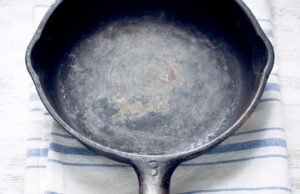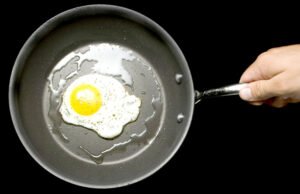As an Amazon Associate, I earn from qualifying purchases at no extra cost to you.
How to Clean Dishwasher with Tang: Surprising Tricks
Ever stared at your dishwasher and thought, “Is this really clean?” Crusty soap scum, funky smells, and leftover gunk can make even the newest dishwasher feel gross. Curiously, a simple kitchen hack using Tang can change everything. In this article, we’ll explore a fun, unusual way to freshen your dishwasher. Ready to try something a little different and maybe a bit quirky? Let’s dive in.
Tang’s citric acid helps break down mineral deposits and soap scum. Simply sprinkle or dissolve it, run a hot cycle, and watch buildup disappear. Regular use prevents odors and improves efficiency. Always check for any leftover residue and rinse components if needed. This method is cheap, easy, and safe for most dishwasher interiors. You can even combine it with routine wipe-downs of the door and filter.
Gather Supplies and Prepare Dishwasher
Before you start, you’ll need Tang powder, a sponge, and access to hot water. Make sure your dishwasher is empty—this is not the time for leftover plates. Curious? A little prep makes cleaning smoother and less messy. Think of it like a mini kitchen experiment that pays off big.
Check the filter and remove any large debris. Dirty filters slow down cycles and can make Tang less effective. Don’t skip this part—it’s quick and makes a huge difference. Remember, a clean filter lets the citric acid reach every corner.
Pour a few tablespoons of Tang directly into the bottom of the dishwasher. You can experiment with flavors, though classic orange works best. Wondering if it’s too sticky? Don’t worry; the cycle will dissolve it completely.
Finally, close the door and select a hot water cycle. Some prefer adding an extra rinse for good measure. Stand back and enjoy the citrusy aroma filling your kitchen. It’s oddly satisfying to see something so simple work wonders.
- Ensure dishwasher is empty
- Clean filter first
- Add Tang powder to bottom
- Run hot water cycle
Focus on Filters and Spray Arms
A dishwasher’s filters and spray arms are often overlooked. They trap food particles that Tang alone can’t dissolve. Removing them lets you clean thoroughly. Don’t worry, it’s easier than it sounds and worth the effort.
Soak the filters in a mixture of Tang and warm water for 15–20 minutes. You’ll notice mineral buildup softening almost immediately. Small brushes or old toothbrushes help reach tricky spots. It’s like giving your dishwasher a spa day.
Spray arms can be equally clogged. Use a pin or toothpick to clear holes. Tang can then circulate freely, hitting every nook. Ever wondered why some dishes stay streaky? Blocked spray arms are often the culprit.
After soaking, rinse all parts with warm water. Reassemble carefully and place them back in the dishwasher. The next cleaning cycle will be more effective, leaving your dishes sparkling.
- Soak filters in Tang solution
- Use brush for hard-to-reach areas
- Clear spray arm holes
- Rinse and reassemble
Use Tang During a Hot Cycle
Adding Tang directly to a hot cycle enhances its cleaning power. Citric acid thrives in heat, breaking down grease and deposits. Curious how something so simple works? Science and kitchen hacks collide beautifully here.
Measure your Tang carefully—too little, and results are weak; too much, and residue can remain. Usually, two to three tablespoons are enough. Spread it evenly at the bottom so the water dissolves it efficiently.
Select the hottest setting on your dishwasher. High temperatures help Tang penetrate tough buildup. A normal cycle is fine, but extended cycles boost results. Ever noticed your dishwasher smells amazing after a citrus rinse? That’s the Tang working its magic.
Once the cycle ends, open the door and inspect the interior. Wipe down with a damp cloth if needed. The combination of heat, acid, and water will leave your dishwasher smelling fresh and looking cleaner.
- Add measured Tang to bottom
- Use hottest cycle setting
- Allow water to dissolve completely
- Wipe interior after cycle
Address Stubborn Odors
Sometimes dishwashers still smell even after cleaning. Tang is great, but extra attention may help. Wondering why odors linger? Food particles hiding in corners are often the culprits.
Run a short cycle with Tang and add a cup of white vinegar to the rinse aid compartment. The combination neutralizes odors and lifts grime. Small tip: leave the door slightly open after cycles to air dry. It reduces damp smells significantly.
Check rubber gaskets and door edges. These areas trap water and bacteria. A sponge with Tang solution can refresh them quickly. You might even notice a citrus scent lingering pleasantly after wiping.
Repeat the Tang hot cycle monthly for maintenance. Regular cleaning prevents buildup and keeps smells at bay. It’s an easy trick that saves frustration and ensures consistently clean dishes.
- Combine Tang and vinegar for odor
- Air-dry by leaving door open
- Clean gaskets and edges
- Repeat monthly for upkeep
Clean Racks and Utensil Holders
Racks and utensil holders often hide grime. Tang can help, but a little scrubbing goes a long way. Curious? Even small deposits affect dish cleanliness.
Remove racks if possible and soak in Tang solution. Use a soft brush to scrub stuck-on residue. Rinse thoroughly afterward to avoid sticky patches. It’s a simple step that can transform dishwasher performance.
For utensil holders, Tang powder can be sprinkled directly into the slots. Hot water cycles dissolve buildup in hard-to-reach areas. Small tip: a quick shake during soaking helps Tang reach every crevice.
Reassemble everything carefully. Make sure holders and racks are dry before use. Your dishwasher will be cleaner, brighter, and ready to tackle the next load of dirty dishes.
- Soak racks in Tang solution
- Scrub with soft brush
- Sprinkle Tang in utensil holders
- Rinse and reassemble
Maintain Sparkling Results
Cleaning with Tang works best with regular maintenance. Waiting too long can let grime accumulate again. Curious how often? Monthly cycles are usually enough for most households.
Wipe down door seals, check filters, and sprinkle Tang occasionally. Combine with occasional vinegar cycles for extra freshness. Small habits prevent big cleaning jobs later, saving time and effort.
Observe performance: if dishes still look dull, check spray arms and racks. Tang makes cleaning easier, but attention to detail keeps everything spotless. Even a quick rinse after meals prevents buildup.
Keep a small container of Tang near your dishwasher. Quick access makes monthly cleaning painless. Your kitchen will smell citrusy, and you’ll enjoy fresh, sparkling dishes consistently.
- Clean monthly
- Wipe seals and check filters
- Combine Tang with vinegar occasionally
- Monitor performance and adjust
Final Thoughts
Cleaning your dishwasher with Tang is simple, cheap, and surprisingly effective. The citric acid dissolves buildup, freshens odors, and keeps parts functioning smoothly. Regular use prevents grime accumulation and makes maintenance easier. Even small efforts, like checking filters or wiping gaskets, enhance results. Your dishwasher will look, smell, and perform better—plus, citrus aromas make the process oddly fun.
| Item | Purpose | Tip |
|---|---|---|
| Tang powder | Dissolves mineral deposits | 2–3 tbsp at bottom |
| White vinegar | Neutralizes odors | Add to rinse compartment |
| Sponge/brush | Scrub filters and racks | Soft for delicate parts |
| Hot water cycle | Activates Tang | Use highest temperature |
Frequently Asked Questions (FAQs)
Is it safe to clean my dishwasher with Tang?
Yes, using Tang is generally safe for most dishwashers. The citric acid helps remove mineral buildup and soap scum without harsh chemicals. Avoid using excessive amounts—two to three tablespoons are usually enough. Tang doesn’t damage stainless steel or plastic parts. It’s a mild alternative to strong commercial cleaners, making it great for households looking for gentle, effective cleaning. For extra caution, rinse any removable parts afterward.
Can Tang remove stubborn odors from a dishwasher?
Absolutely! Tang’s citric acid breaks down grime and neutralizes smells. For stronger odors, combine it with white vinegar. Run a hot cycle, and you’ll notice the citrus aroma replacing musty scents. Some users also wipe gaskets and door edges with Tang solution to target hidden bacteria. Regular monthly use keeps odors from returning, ensuring your dishwasher smells fresh consistently.
Do I need to remove racks before using Tang?
It’s not mandatory but highly recommended. Removing racks allows Tang solution to reach hidden areas more effectively. Soaking racks in a Tang solution loosens buildup and ensures better cleaning results. Even if you leave them in place, sprinkle Tang evenly and run a hot cycle for decent results. Small scrubs after soaking improve overall cleanliness.
Is Tang effective against mineral deposits?
Yes, Tang’s citric acid is excellent at breaking down hard water deposits. It softens mineral buildup around spray arms, filters, and racks. Regular use prevents deposits from affecting dishwasher performance. Think of it like a natural, inexpensive descaler that keeps your machine running smoothly. Combined with occasional vinegar cycles, it’s very effective.
Can I use flavored Tang in the dishwasher?
Yes, though citrus flavors work best due to their higher citric acid content. Some fruity flavors may leave faint scents, but cleaning effectiveness is similar. Avoid overly sweet or artificially colored varieties if concerned about residue. Classic orange Tang is the most reliable choice for consistent results.
Do I need to rinse the dishwasher after using Tang?
It’s a good idea to wipe down the interior after the cycle. Most of the Tang will dissolve completely during a hot cycle. Rinsing ensures no sticky residue remains on filters, racks, or spray arms. This step enhances cleanliness and prevents flavor or powder buildup on dishes.
Is Tang safe for all dishwasher models?
Generally, yes, Tang is safe for standard dishwashers. Avoid using on appliances with delicate coatings or parts sensitive to acids. Check manufacturer guidelines if unsure. For most homes, Tang is a gentle, cost-effective cleaning option.
Can regular Tang cleaning improve dishwasher efficiency?
Yes, keeping filters, spray arms, and interiors free of buildup helps water flow efficiently. This reduces cycle times and ensures dishes come out cleaner. Routine Tang cleaning prevents clogs, odors, and streaks, extending the life of your dishwasher while saving energy and water.




